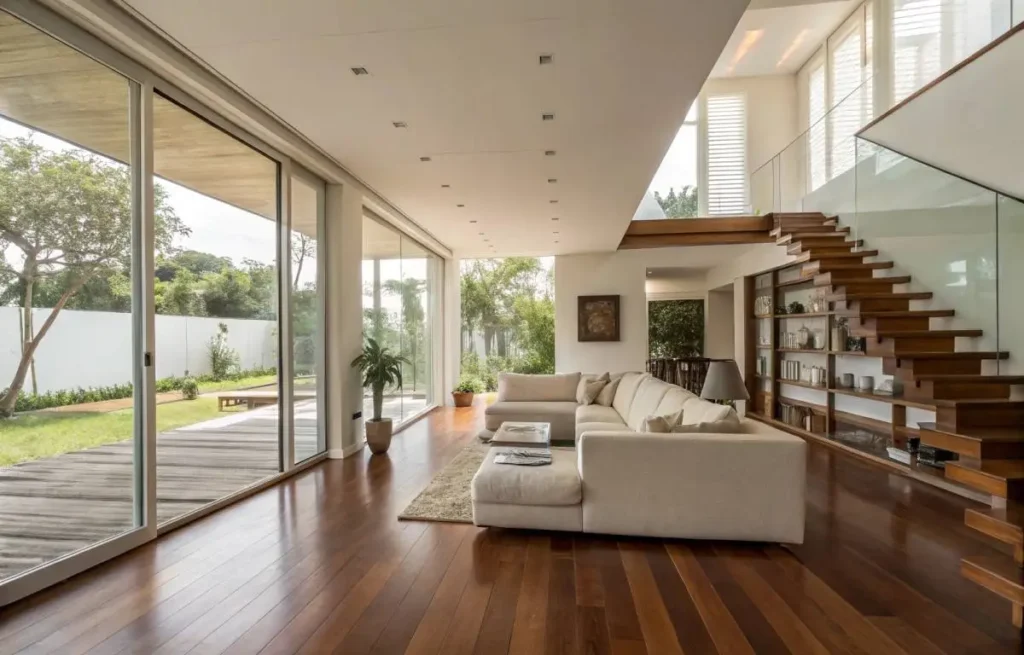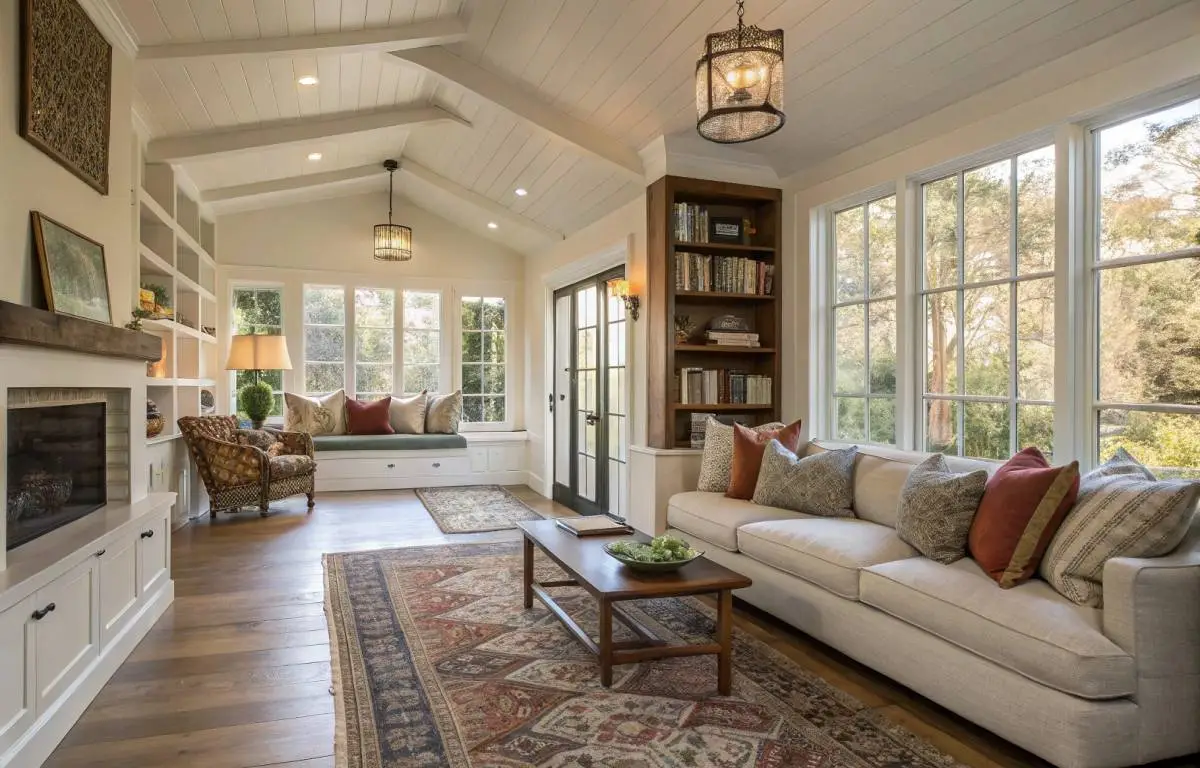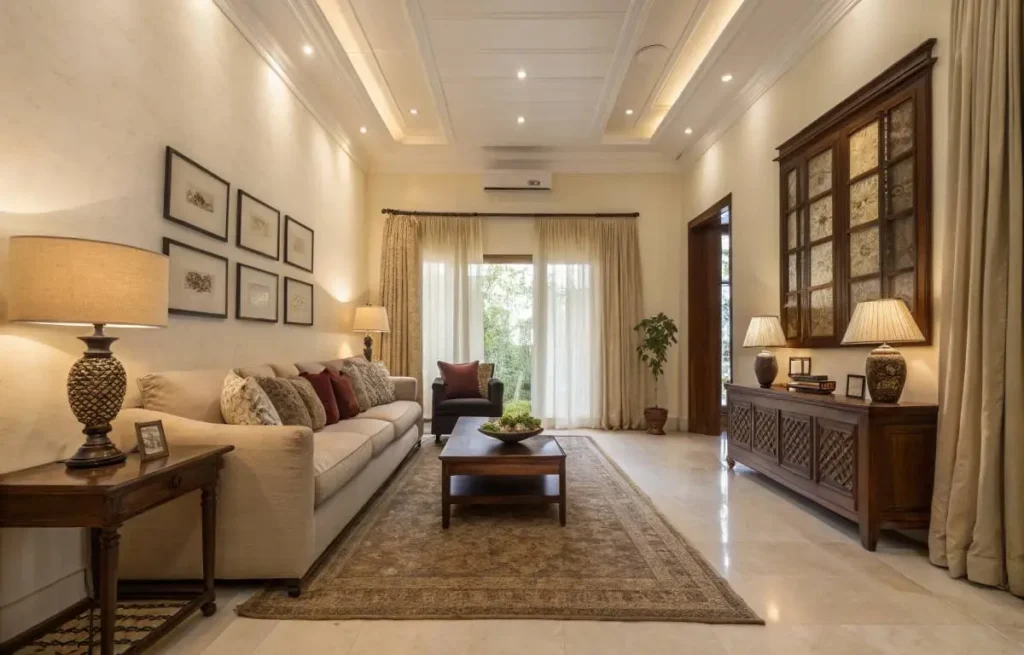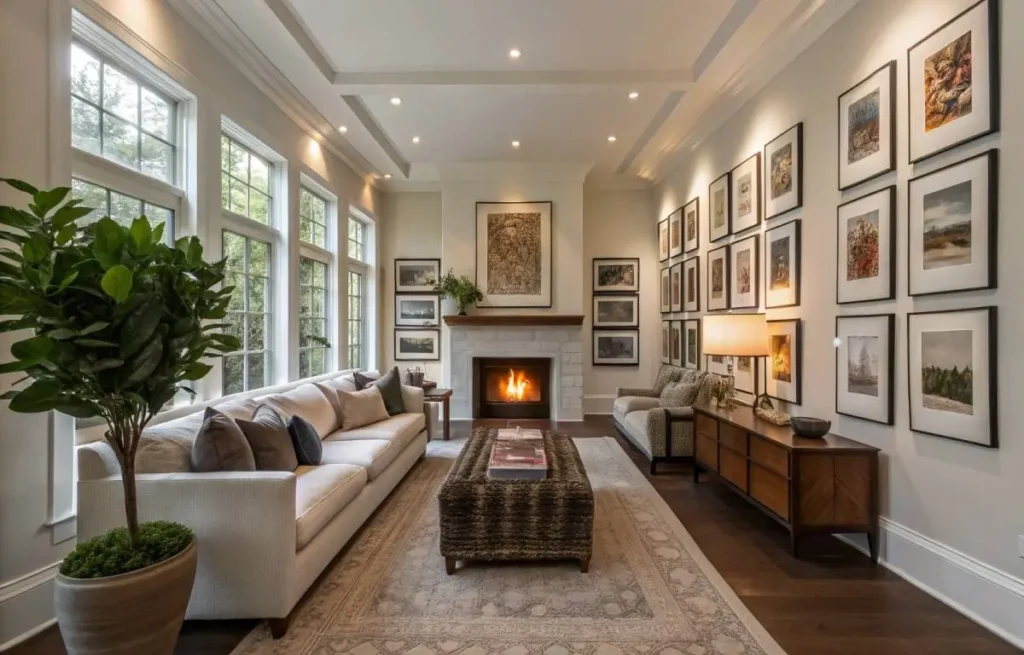Decorate a long living room poorly, and you’ll quickly find yourself with a space that feels like a hallway no one wants to use. Long living rooms present a unique design challenge, too often, they become either awkwardly empty or so over-furnished they lose all comfort. This article dives into the number one mistake people make when styling these spaces, and more importantly, how to avoid it. From layout and zoning to furniture scale and lighting, we’ll unpack practical, design-backed solutions to help you create a room that feels cohesive, inviting, and tailored to your lifestyle.
Understand the Flow and Layout Before You Decorate

Why flow is everything when you decorate a long living room
A long living room can feel awkward if the natural flow is blocked by misplaced furniture or poor layout decisions. The biggest mistake people make is assuming more space means more furniture, but this often leads to a congested, confusing room. Architectural Digest notes that, “in any extended living area, visual rhythm must lead the eye without interruption.” That’s because good design mimics how we move through space, not how we store objects in it.
I’ve personally walked into homes where the sofa cut the room in half like a wall, forcing guests to shuffle sideways just to pass by. It’s frustrating, and honestly, it makes people want to leave rather than linger. A smart layout isn’t about looks first, it’s about how the room breathes. According to the National Association of Home Builders, 58% of homeowners with long living rooms struggle with dead zones and furniture congestion. That’s a huge number, and it tells us something is going wrong at the layout level.
The role of entry points and walking paths
A common issue when you decorate a long living room is ignoring how people enter or cross the space. You need to anticipate traffic like a city planner. Is the path from the door to the seating clear? Does anyone have to walk through the middle of a conversation area to get to the kitchen? If yes, pause and rethink. Flow isn’t accidental, it’s designed.
Don’t let furniture fight your layout
The way you arrange furniture either enhances or breaks the room’s shape. For long rooms, you’re not filling space, you’re dividing it intentionally. Float your furniture away from the walls and create natural lanes, like a conversation path and a lounging path. Interior designer Shea McGee once said, “Furniture shouldn’t lean against the walls for support, it should stand confidently in the space.” It’s a small mindset shift that changes everything.
Create Separate Zones With Purpose

Use furniture to shape zones, not just fill them
When you decorate a long living room, zoning becomes your best tool. One end of the room could become a cozy reading corner, the other a conversation area. Zoning adds layers, and layers create interest. A 2023 survey by Houzz found that multi-functional living rooms were 36% more satisfying to users than single-purpose ones.
And here’s the trick: your sofa, console, or even a rug can act like a light divider. No need for screens or walls. Just a bit of smart placement.
Rugs and lighting define boundaries
Nothing creates a subtle zone like an area rug paired with dedicated lighting. A pendant light over a small café table says “this is a place to gather,” even without walls. The trick is visual cueing, and it’s incredibly effective. As interior expert Emily Henderson notes, “You can manipulate perception with vertical and horizontal anchors, lighting and rugs are your anchors.”
Why defining zones adds intimacy
People connect better in small, defined spaces. A long open stretch feels like an airport hallway. By creating sections, you create moments. Each area tells a story, “This is where we drink coffee,” “That’s where we curl up and talk.” These mini-stories make the space emotionally inviting, not just spatially efficient.
Choose the Right Furniture Scale and Orientation

Don’t overpower the room with bulky pieces
A long living room may seem like it needs big furniture, but that’s usually the wrong call. Oversized sectionals can dominate, leaving little room for breathing space. Instead, aim for leaner silhouettes and pieces that leave room around them. Design site Modsy reports that nearly 42% of homeowners with long living rooms regret choosing oversized furniture after six months.
I once helped a friend replace a massive TV stand that took up an entire wall. It made the room feel like a tunnel. Once we swapped it for a sleek, mid-century console, the room opened up. The difference was emotional, not just visual.
Orient furniture for connection, not walls
In narrow spaces, the instinct is to line things up against the long wall, but this creates a bowling alley effect. Orient seating inward, around a shared focal point like a coffee table, to form a conversation loop. It encourages connection and keeps the room from feeling like a corridor.
Mix furniture heights and depths for balance
Flat furniture across a long wall makes the room look flat. Introduce height with a tall bookcase or layered wall art. Depth also matters, don’t put deep chairs next to shallow ones unless they visually balance out. Designer Nate Berkus suggests mixing a 16-inch low coffee table with a 36-inch high sideboard to add variation and visual lift. That contrast makes the room feel dimensional and alive.
Use Color, Texture, and Light to Add Warmth

Light, mid, and dark tones balance a long space
A narrow space painted one color from end to end can feel cold or stretched. Layering tones, like a warm off-white for walls, a medium-tone sofa, and deeper accents, creates depth and draws the eye through the room. Sherwin-Williams color consultants often recommend tonal palettes in long spaces because they “anchor the eye without overwhelming it.”
Texture stops the eye from “sliding”
Too many smooth surfaces can make a long room feel sterile. Add woven textures, wood grain, soft fabrics, anything tactile. Texture makes the space feel human. I once saw a room with all glass, metal, and lacquer, it was stunning in photos, but standing in it felt clinical.
You need softness. A jute rug, a velvet cushion, even linen curtains, they invite touch and warmth. As Elle Decor explains, “Texture builds comfort even before the first sit.”
Natural light and lamps work together
Long rooms often have windows at only one end. That’s a problem. Supplement with lamps spaced evenly throughout the room, especially floor lamps in corners. Mix task lighting and ambient lighting so the entire room glows evenly.
According to the American Lighting Association, “layered lighting reduces harsh shadows and improves mood in extended rooms.” It’s not just a design choice, it’s a psychological one.
Avoid the Mistake of a Single Focal Point

A long living room needs more than one visual anchor
One of the most common and costly decorating mistakes is relying on a single focal point. Often, it’s the TV, but that alone can’t carry a long room. You need visual interest throughout. Think gallery wall on one end, fireplace on the other, or a large plant grouping off-center.
As interior stylist Justina Blakeney says, “Your eye wants to move, give it permission to wander.”
How to create layers of focus
Start with your main focal point, then create secondary ones. A statement chair, a bold art piece, or even an oversized plant adds depth. These smaller elements don’t fight for attention, they support the room’s flow. In fact, Zillow’s 2022 Home Trends report found that homes with multiple room focal points saw 12% higher buyer interest during virtual tours.
Why symmetry isn’t always the answer
Perfect symmetry looks great in a showroom, but in a long living room, it can feel formal and rigid. Slight asymmetry, like an off-center coffee table or mismatched side chairs, adds charm and realism. I once tried perfect symmetry in a client’s long room, and they hated it. We shifted one chair, added an odd-numbered gallery wall, and suddenly the space felt alive.
Conclusion
When you decorate a long living room, the key isn’t filling it, it’s shaping it. Avoiding that one costly mistake of poor layout sets the tone for everything else. Instead of treating it as one endless room, treat it as a story unfolding in chapters. From flow to furniture, texture to lighting, and focal points to furniture scale, every piece matters.
And remember, it’s not about copying trends. It’s about making the space work for the way you actually live. Design isn’t a checklist, it’s a conversation. And when done right, a long living room can feel not just balanced, but deeply welcoming.
People Also Read
Corner Decoration Ideas For Living Room That Changed My Home
Wall Art Decor for Living Room You’ll Regret Skipping
FAQs
1. How do I make a long living room feel cozy?
Use zoning with rugs and lighting, add layered textures, and create intimate seating areas to break up the space.
2. What furniture layout works best for a long living room?
Float furniture away from walls to create natural walkways and orient seating inward to encourage conversation.
3. How can I improve flow in a long living room?
Clear traffic paths, avoid blocking entry points, and divide the room into purposeful zones.
4. What colors are best for a long living room?
Use a tonal palette with light, mid, and dark shades layered to add depth and warmth.
5. Should a long living room have one focal point?
No, multiple focal points placed throughout help balance the space and keep the eye moving naturally.
